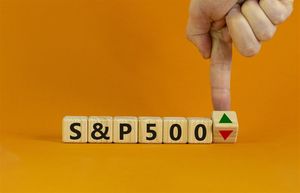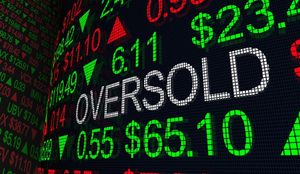
Central banks worldwide are embarking on an unprecedented spree of gold accumulation, a trend that has significantly intensified in recent years and shows no signs of abating as of November 2025. This aggressive pivot towards the yellow metal, coupled with Russia's groundbreaking move to explicitly include silver in its strategic reserves, signals a profound shift in global reserve management strategies. Driven by a complex interplay of geopolitical uncertainties, persistent inflation concerns, and a concerted effort towards de-dollarization, these actions are sending significant ripples across global financial markets, reshaping currency dynamics, commodity valuations, and the very architecture of international finance.
A Structural Shift in Global Reserves
The scale of central bank gold purchases has reached historic proportions. For three consecutive years—2022, 2023, and 2024—net gold acquisitions by central banks exceeded 1,000 tonnes annually, with 2024 alone seeing 1,044.6 tonnes added to global coffers. This trend continues robustly into 2025, with central banks acquiring 634 tonnes year-to-date by the third quarter, a pace that, while slightly below the preceding three exceptional years, remains well above historical averages. September 2025 marked a particular surge, with official sector purchases jumping by 79% month-over-month to 39 tonnes. Key players in this accumulation include Poland (67.2 tonnes), Azerbaijan (34.5 tonnes), Kazakhstan (22.1 tonnes), China (19 tonnes), and Turkey (17.2 tonnes) in the first half of 2025. India's Reserve Bank of India (RBI) further underscored this trend by adding approximately 600 kilograms between April and September 2025, bringing its total gold reserves to 880 tonnes, and notably repatriating significant portions of its gold from abroad in 2024 due to security concerns. The World Gold Council's 2025 survey highlights strong future expectations, with 95% of central banks anticipating a further increase in global gold reserves, and 43% planning to boost their own holdings. Globally, central banks now hold an estimated 54,000 tonnes of gold, representing roughly 11% of the world's total foreign exchange reserves as of Q3 2025.
In a stark departure from half a century of central bank practice, Russia (MOEX: RU000A0JR4A6) made waves in 2024 by becoming the first nation to publicly announce the explicit inclusion of silver in its state reserves. This strategic move involves allocating $535 million over the 2025-2027 period for precious metals, including silver, platinum, and palladium. This groundbreaking decision by Russia is viewed as a strategic maneuver to further diversify its reserves beyond traditional assets and reduce dependency on Western financial systems, viewing precious metals as sanction-proof.
The immediate market reactions have been palpable. Persistent central bank demand has created a "structural floor" under gold prices, propelling them from $2,000 per ounce in early 2024 to nearly $2,800 by December, and now pushing towards the $3,000 mark in 2025. Analysts from J.P. Morgan Research are forecasting an average of $3,675 per ounce by Q4 2025, with a climb towards $4,000 by mid-2026. Silver, spurred by Russia's move and robust industrial demand, has significantly outperformed gold, surging over 30% since early 2025, with Citi Group forecasting prices to reach $40 per ounce in the near term. Concurrently, the U.S. dollar's share in global reserves has continued its decline, with gold now accounting for 20% of central bank reserves compared to the dollar's approximately 46%. A majority of central banks anticipate a further moderation or significant decline in U.S. dollar holdings, primarily due to concerns about U.S. fiscal dynamics and political volatility. This shift is expected to benefit other currencies, such as the Euro (EUR) and the Chinese Yuan (CNY), which central banks anticipate will increase their share in global reserves, while also indicating a potential shift in demand for U.S. government debt as countries like China and India reduce their holdings of U.S. Treasuries.
Corporate Fortunes: Who Wins and Who Faces Headwinds in the Precious Metals Rush
The monumental shift by central banks towards accumulating gold and silver is creating a clear delineation of winners and those facing significant headwinds across various industries. Primarily, the precious metals mining sector stands to gain substantially, while certain industrial users of silver and some silver refiners may encounter challenges.
Gold and silver mining companies are the unequivocal primary beneficiaries. The surge in precious metal prices—with gold pushing towards $3,000 per ounce in 2025 and silver rallying over 30% since early 2025—directly translates to vastly improved revenue streams, expanded profit margins due to operational leverage, and robust cash flows. This bullish environment often enables higher dividend payouts, significant stock price appreciation, and enhanced capacity for strategic growth through exploration, technological upgrades, and mergers and acquisitions. Major gold producers such as Newmont Corporation (NYSE: NEM), the world's largest gold producer, Barrick Gold Corporation (NYSE: GOLD), Agnico Eagle Mines Limited (NYSE: AEM), Kinross Gold Corporation (NYSE: KGC), Gold Fields Limited (NYSE: GFI), and AngloGold Ashanti plc (NYSE: AU) are experiencing a boom. For instance, Alamos Gold Inc. (NYSE: AGI) reported a 110% year-on-year rise in adjusted net earnings in Q4 2024, driven by a 47% increase in operating revenues, showcasing the potent operational leverage at play. Similarly, leading silver producers like Pan American Silver Corp. (NASDAQ: PAAS), First Majestic Silver Corp. (NYSE: AG), and Coeur Mining, Inc. (NYSE: CDE) are reporting substantial revenue growth, with First Majestic Silver seeing a 95% year-over-year revenue increase in Q3 2025, buoyed by increased sales volumes and a 31% rise in realized silver prices. Precious metal royalty and streaming companies such as Wheaton Precious Metals Corp. (NYSE: WPM) and Franco-Nevada Corporation (NYSE: FNV) also benefit immensely, as they receive a percentage of future production or revenue without incurring direct operational costs, leveraging rising metal prices for increased profitability.
Conversely, certain sectors face emerging challenges. Industries heavily reliant on silver as a critical input, such as solar panel manufacturers, electric vehicle (EV) producers, and various electronics companies, are confronting escalating material costs. While silver is indispensable for these advanced technologies, its surging price and anticipated structural supply deficits by 2025 could significantly impact manufacturing expenses, product pricing, and ultimately, profit margins. These companies may need to implement sophisticated hedging strategies or accelerate investments in recycling initiatives to mitigate these growing cost pressures. Furthermore, some precious metal refiners, particularly those dealing with silver, are experiencing a temporary liquidity crisis. As of October 2025, exceptionally high silver lease rates, sometimes reaching 80% or 100%, are making it uneconomical for refiners and bullion banks to finance the silver held during the refining process, effectively eroding profit margins and pausing normal advancing arrangements for silver. This could negatively impact their short-term operations and profitability related to silver refining, despite the high market price of the metal.
Beyond direct commodity exposure, the broader financial landscape is also feeling the effects. Financial institutions that offer specialized precious metals accounts and facilitate physical delivery, such as IFB Bank and EverBank, could see increased business from institutional and high-net-worth investors seeking tangible asset diversification. Investment funds and Exchange-Traded Funds (ETFs) focused on physical precious metals or mining company securities, like the Sprott Physical Gold and Silver Trust (NYSEARCA: CEF), VanEck Gold Miners ETF (NYSEARCA: GDX), and iShares Silver Trust (NYSEARCA: SLV), are likely to attract significant investor inflows as capital rotates towards precious metals. However, financial institutions with heavy exposure to traditional fiat currencies or those whose business models are predicated on a stable, dollar-centric global financial system may face headwinds as central banks actively diversify away from the U.S. dollar, potentially leading to underperformance in competing asset classes like traditional equities and bonds.
The Wider Significance: De-Dollarization and a Multipolar Monetary Future
The aggressive accumulation of gold and, increasingly, silver by central banks globally, particularly as of November 2025, signifies a profound recalibration of global financial dynamics. This trend is a leading indicator of a strategic pivot away from traditional reserve currencies, most notably the U.S. dollar, and reflects a growing sentiment towards de-dollarization. This collective action aims to diversify national reserves and reduce reliance on a single currency, which has traditionally offered global dominance to the issuing country.
A primary driver for this shift is the heightened geopolitical risk and concerns over asset seizure. The freezing of approximately $300 billion in Russian foreign reserves following the 2022 invasion of Ukraine served as a significant "wake-up call" for many nations, underscoring the vulnerability of dollar-denominated assets to political weaponization. Consequently, central banks are increasingly viewing physical gold as a sanctions-resistant asset. This move is also a calculated geopolitical strategy by nations like China and Russia, often alongside other BRICS+ economies, to enhance financial sovereignty and challenge the global dominance of the U.S. dollar, positioning gold as a neutral foundation for alternative payment and trade settlement systems. Persistent inflationary pressures and concerns about the long-term erosion of fiat currency purchasing power further fuel the shift towards tangible assets. As of November 2025, gold has already surpassed the Euro as the second-largest reserve asset in 2024 and is on the brink of surpassing US Treasuries in global reserve portfolios.
Regulatory changes have also played a crucial role, particularly the implementation of Basel III. As of July 1, 2025, the U.S. officially adopted gold as a Tier 1 asset under Basel III, aligning its bank capital rules with global standards. Under these regulations, physical (allocated) gold is considered a Tier 1 high-quality liquid asset (HQLA) with a zero percent risk weighting, while unallocated ("paper") gold is classified as a Tier 3 asset. This reclassification makes trading unallocated gold significantly more expensive for banks, as they must now hold 100% physical metal backing for their gold positions, effectively ending the fractional reserve system in gold trading. This change enhances gold's attractiveness to commercial banks and institutional investors, driving further demand for physical metal and contributing to its upward momentum.
Historically, central bank gold accumulation is not unprecedented but represents a significant reversal from recent decades. Following the end of the Bretton Woods agreement in the early 1970s, gold's share of global central bank reserves surged. However, from the 1980s to the early 2000s, central banks were net sellers. The attitude shifted decisively after the 2008 global financial crisis, with central banks becoming consistent net buyers since 2010. The freezing of Russian assets in 2022 served as a modern catalyst, accelerating this trend, particularly among emerging market economies, reinforcing the need for reserve diversification.
What Comes Next: A New Era for Precious Metals and Global Finance
The sustained accumulation of precious metals by central banks signals a new era for global financial markets, characterized by both short-term stability and long-term structural shifts.
In the short-term (late 2025 - early 2026), central bank buying is expected to continue acting as a stabilizing force, providing consistent floor support and limiting downside volatility for gold. Gold has likely established a new psychological and technical floor around $4,000 per ounce, which now functions as a consolidation point. This institutional confidence encourages private investors, leading to increased market participation. Gold prices are expected to consolidate near elevated levels, with potential for further gains towards $4,100-$4,200 if it maintains above $4,040. Silver, while less directly accumulated by central banks, will continue to benefit from its dual demand as a safe-haven asset and its burgeoning industrial use in green energy, leading to significant price surges.
Looking at the long-term (2026 and beyond), this trend represents a profound structural change, establishing new price floors and creating sustained upward pressure on gold prices. It signifies a deep-seated erosion of confidence in traditional fiat currencies and government bonds, particularly amid persistent inflation and national debt. This "de-dollarization" trend is a calculated geopolitical strategy to foster a multipolar monetary system, challenging the U.S. dollar's global dominance. Forecasts from institutions like J.P. Morgan Research project gold to average $3,675/oz by Q4 2025 and climb towards $4,000 by mid-2026, with some analysts eyeing $5,000-$6,000 per ounce by 2026 and even higher by 2030. Silver is also expected to maintain steady gains, with professional forecasts targeting $59 per ounce by late 2026, driven by improving industrial demand and its safe-haven appeal.
Strategic pivots are already underway. Financial institutions are re-evaluating reserve management, reducing exposure to traditional fiat holdings, and building substantial precious metals portfolios, further supported by Basel III classifications. Investors, both institutional and individual, are adapting by focusing on strategic accumulation rather than tactical timing, recognizing that central bank buying creates sustained support levels. Portfolio diversification with a higher allocation to gold and silver is becoming increasingly crucial as a hedge against currency uncertainties and systemic financial risks. Emerging markets, particularly in Asia, the Middle East, and Eastern Europe, are seizing the opportunity to enhance their monetary independence and financial security, though supply constraints for silver and geopolitical volatility in mining jurisdictions present challenges. Potential scenarios include a continued bullish trajectory for both metals, new all-time highs, and a gradual de-dollarization leading to a more diversified global financial system, possibly with new currency mechanisms partially backed by gold.
Comprehensive Wrap-up: A Golden Future Amidst Shifting Sands
The central bank accumulation of precious metals, particularly gold, is not a fleeting market phenomenon but a profound structural realignment in global reserve management. It underscores the increasing view of gold as a core pillar of monetary sovereignty, an inflation hedge, and geopolitical insurance in an era of heightened uncertainty. Silver's value, meanwhile, is being driven by both its traditional safe-haven characteristics and robust industrial demand from green energy technologies. This trend is a clear signal of ongoing de-dollarization efforts, primarily from emerging markets seeking greater financial autonomy.
The market outlook for both gold and silver remains largely bullish into 2026 and beyond. This is underpinned by the consistent and policy-driven demand from central banks, ongoing geopolitical tensions, persistent inflationary concerns, and the anticipated easing of monetary policies by major central banks, which reduce the opportunity cost of holding non-yielding assets. Gold has likely established new, higher price floors, and while corrections will occur, the overall trajectory is upward. The lasting impact will likely be a more diversified and potentially multipolar global financial system, where tangible assets play a more central and strategic role in national wealth management and international trade, challenging the long-standing dominance of fiat money, particularly the U.S. dollar.
As of November 2025, investors should closely monitor several key indicators in the coming months. Federal Reserve policy signals, especially regarding interest rate cuts, will be crucial. Ongoing geopolitical developments will continue to reinforce gold's safe-haven appeal, while persistent inflation trends will strengthen the argument for precious metals as an inflation hedge. Key economic data releases, such as the ADP employment report and ISM Purchasing Managers’ Index (PMI) figures, will offer insights into economic health and potential central bank policy directions. Finally, regular updates from organizations like the World Gold Council on central bank buying activities, alongside trends in silver's industrial demand, will be vital indicators of demand and market sentiment.
This content is intended for informational purposes only and is not financial advice







